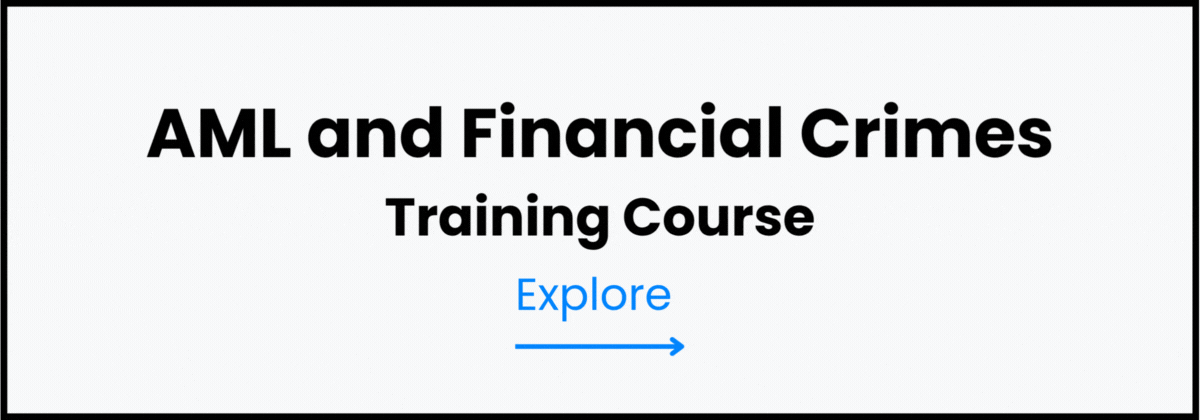What Is Anti-Money Laundering (AML) and Why Is It Important?
Anti-Money Laundering (AML) refers to a comprehensive system of laws, regulations, and procedures designed to detect and prevent criminals from disguising illegally obtained funds as legitimate income. Through an effective AML framework, governments, regulators, and financial institutions work together to safeguard the integrity of the global financial system and disrupt the flow of illicit money tied to corruption, fraud, and organized crime.
Money laundering typically occurs in three stages:
- Placement: Introducing illicit funds into the financial system, often through deposits, purchases, or transfers.
- Layering: Concealing the source of the money by moving it through complex transactions or multiple accounts.
- Integration: Reintroducing the “cleaned” funds into the economy as apparently legitimate assets or investments.
The importance of AML measures extends beyond compliance — it is vital for global financial stability, corporate integrity, and national security. Without strong AML enforcement, illegal funds could infiltrate legitimate economies, finance terrorism, or undermine public trust in financial institutions.

Understanding Anti-Money Laundering (AML)
The anti-money laundering framework serves as the global foundation for combating illicit financial activities and preserving the integrity of legitimate economies. Originating in the late 20th century, AML efforts were developed to counter the increasing sophistication of financial crimes that transcend national borders. The primary objective of AML initiatives is to identify, prevent, and report suspicious financial activities that could disguise the origins of criminal proceeds or fund terrorism.
Several international organizations and regulatory bodies have shaped today’s global compliance standards. The Financial Action Task Force (FATF), established in 1989, sets worldwide benchmarks and recommendations for AML and counter-terrorist financing (CTF) systems. The Basel Committee on Banking Supervision provides guidance on risk management and due diligence within financial institutions, while the Egmont Group of Financial Intelligence Units (FIUs) facilitates cross-border collaboration and information sharing among enforcement agencies.
Modern AML initiatives extend beyond traditional banking, encompassing fintech, insurance, real estate, and digital asset sectors. By promoting transparency, due diligence, and international cooperation, AML frameworks act as a critical line of defense against financial crime and terrorist financing.
Ultimately, the effectiveness of the anti-money laundering framework depends on global coordination, technology-driven compliance, and the shared commitment of governments and financial institutions to safeguard economic stability and public trust. (Fraud and Corruption in the Workplace Course)
How Money Laundering Works — The Three Stages
To understand the importance of AML measures, it’s essential to grasp how the money laundering process unfolds. Criminals use a series of deliberate steps to disguise the origin of illicit funds and make them appear legitimate. This process typically occurs in three distinct stages — each presenting unique risks and requiring targeted financial crime detection controls.
1. Placement – Introducing Illegal Funds
This is the initial stage, where criminals inject illicit money into the financial system. Common methods include bank deposits, purchasing monetary instruments, or using cash-based businesses to disguise proceeds from illegal activities.
➡️ AML controls: Transaction reporting thresholds, customer due diligence (CDD), and suspicious activity monitoring help identify unusual cash movements early in this stage.
2. Layering – Concealing the Source
At this point, the launderer seeks to obscure the money trail through a series of complex transactions. This may involve transferring funds between multiple accounts, investing in foreign assets, or using shell companies to disguise ownership.
➡️ AML measures: Advanced transaction monitoring systems, cross-border reporting, and data analytics play a key role in uncovering patterns that indicate layering activity.
3. Integration – Reintroducing “Cleaned” Money
Finally, the laundered money reenters the legitimate economy through investments, property purchases, or business ventures. By this stage, the illicit origin appears legitimate and difficult to trace.
➡️ AML frameworks: Enhanced due diligence (EDD), beneficial ownership verification, and financial disclosures are designed to detect and disrupt this phase.
By targeting each phase of the money laundering process, effective AML measures disrupt criminal financial networks, strengthen transparency, and protect the integrity of the global financial system. (Review of Financial Accounting & Detecting Fraud Course)
Global Anti-Money Laundering Regulations and Standards
The fight against financial crime relies on a unified system of AML regulations and global cooperation among governments, regulators, and financial institutions. This international compliance framework ensures that money laundering and terrorist financing activities are addressed consistently across borders, strengthening the resilience of the global financial ecosystem.
At the heart of this system lies the Financial Action Task Force (FATF), an intergovernmental organization founded in 1989 to develop and promote financial regulatory standards for combating money laundering and terrorist financing. The FATF issues 40 core recommendations that serve as the foundation for AML and counter-terrorist financing (CTF) laws worldwide. These recommendations guide national regulators in areas such as customer due diligence (CDD), beneficial ownership transparency, and cross-border information sharing.
Major regional and national regulatory bodies have implemented FATF standards within their jurisdictions:
- United States: The Financial Crimes Enforcement Network (FinCEN) enforces the Bank Secrecy Act (BSA), mandating reporting of suspicious activities, large cash transactions, and beneficial ownership details.
- European Union: The EU’s Anti-Money Laundering Directives (AMLDs) align member states with FATF guidance, emphasizing transparency, risk-based approaches, and consistent enforcement across borders.
- Middle East and Asia: Regional organizations such as the MENAFATF (Middle East and North Africa FATF) and APG (Asia/Pacific Group on Money Laundering) promote compliance and technical assistance to align national AML efforts with global standards.
Each country adapts these international benchmarks into national AML regulations, ensuring that financial institutions and designated non-financial businesses implement effective compliance programs. This harmonized structure supports international cooperation, making it harder for criminals to exploit jurisdictional loopholes.
In essence, global anti-money laundering regulations serve as the backbone of a transparent and accountable financial system, promoting collective action to safeguard economies from financial crime and corruption. (Forensic Accounting Professional Course)
AML Regulations for Financial Institutions
Anti-money laundering regulations for financial institutions establish clear and enforceable standards to ensure that banks, insurers, and investment firms act as front-line defenders against financial crime. These regulations are designed to strengthen AML compliance controls, promote transparency, and prevent the misuse of legitimate financial systems for illicit purposes.
Key obligations imposed on financial institutions include:
- Customer Due Diligence (CDD) and Know Your Customer (KYC)
Financial institutions must verify the identity of customers, understand the nature of their business relationships, and determine the source of their funds. Enhanced Due Diligence (EDD) is required for high-risk clients, such as politically exposed persons (PEPs) or those from high-risk jurisdictions. These procedures form the cornerstone of all AML compliance frameworks, helping to prevent criminals from concealing their identities. - Ongoing Monitoring of Accounts and Transactions
Continuous surveillance ensures that account activity aligns with the customer’s known profile. Automated systems analyze patterns to detect anomalies — such as unusually large transfers, frequent international payments, or complex transaction structures — that may indicate money laundering or terrorist financing. - Suspicious Activity Reports (SARs)
When a transaction raises red flags, institutions are legally obligated to file Suspicious Activity Reports with relevant authorities (e.g., FinCEN in the U.S. or local Financial Intelligence Units). These reports provide critical intelligence for financial crime reporting and allow law enforcement agencies to trace illicit activity across networks and jurisdictions. - Record-Keeping and Audit Requirements
Financial institutions must retain customer identification data, transaction records, and reports for a specified period — typically five years or longer, depending on jurisdictional rules. Strong documentation practices enable regulators and auditors to verify compliance during inspections or investigations.
By implementing these anti-money laundering regulations for financial institutions, organizations can identify and manage high-risk customers, detect suspicious activity early, and protect their operations from reputational and legal harm. More importantly, these AML compliance controls strengthen global financial integrity, ensuring that institutions remain trusted and secure pillars of the international economy. (Combating Risk & Fraud in Procurement Course)
The Benefits of Strong AML Compliance
Implementing robust AML compliance practices delivers far-reaching advantages that extend well beyond regulatory adherence. A strong AML framework reinforces trust, enhances resilience, and supports the organization’s long-term sustainability in an increasingly complex financial environment.
-
Strengthened Reputation and Investor Confidence
An institution known for its financial integrity and ethical operations naturally earns greater confidence from investors, clients, and regulators. Effective reputation management through AML compliance demonstrates commitment to transparency and accountability — key qualities that attract partnerships and business opportunities in global markets.
-
Reduced Exposure to Financial and Legal Risks
Strong AML procedures minimize the likelihood of penalties, sanctions, and reputational damage arising from compliance failures. By proactively detecting and reporting suspicious activity, organizations reduce vulnerability to criminal exploitation and avoid costly regulatory actions. This protective layer fosters a more secure operating environment across all financial transactions.
-
Contribution to Global Financial Integrity
Every compliant institution plays a part in upholding the stability of the international financial system. Adhering to global AML standards supports law enforcement efforts, deters money laundering networks, and prevents funds from reaching terrorist or organized crime groups. In essence, effective AML frameworks strengthen collective financial integrity across borders.
-
Enhanced Internal Efficiency and Compliance Culture
Institutions with mature AML systems benefit from streamlined workflows, automated reporting, and better risk visibility. These operational efficiencies encourage a compliance culture where employees understand their role in maintaining ethical conduct and identifying potential risks before they escalate.
In summary, the AML benefits extend far beyond meeting legal obligations — they reinforce an organization’s credibility, stability, and role as a responsible participant in the global financial community. Strong AML compliance is not just good governance; it is a strategic advantage in earning trust and securing long-term success.
Conclusion
In an era of increasing financial complexity and global interconnectivity, Anti-Money Laundering (AML) efforts are more than regulatory obligations — they are pillars of financial transparency, ethical responsibility, and global stability. Effective AML practices empower organizations to detect threats early, protect stakeholder interests, and maintain confidence in the integrity of the financial system.
Building a sustainable culture of compliance requires more than policies and checklists. It demands continuous improvement, cross-functional collaboration, and the integration of advanced technologies such as AI, automation, and data analytics. These innovations not only enhance detection and reporting accuracy but also support faster, smarter decision-making across the financial landscape. Ultimately, a commitment to strong AML compliance reflects an organization’s dedication to doing business with integrity. By upholding transparency, accountability, and vigilance, financial institutions help preserve the credibility of the global economy and strengthen trust for generations to come.




